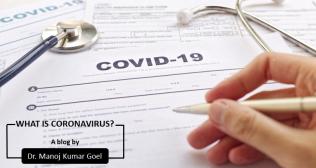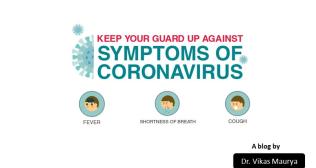
What is Respiratory Acidosis: Symptoms, Diagnosis, and Treatment
Introduction
The pH of the blood indicates the levels of acids and bases in the blood. The pH scale ranges from very acidic, that is, 0, to very basic or alkaline, that is, 14. Normal blood pH is in the range of 7.35 and 7.45. Respiratory acidosis refers to a condition wherein the lungs can’t remove all the carbon dioxide generated by the body. It causes the blood and other body fluids to become extremely acidic. Read on to learn about the causes, types, symptoms, diagnosis, and treatment of respiratory acidosis.
Causes of Respiratory Acidosis
There are several causes of respiratory acidosis, including:
- Airway diseases, such as asthma (severe asthma attacks can result in increased carbon dioxide levels) and chronic obstructive pulmonary disease (COPD) (chronically elevated carbon dioxide shifts the normal acid-base balance toward acidic)
- Lung tissue diseases, like pulmonary fibrosis, which induces scarring and lung thickening
- Diseases that can impact the chest, such as scoliosis
- Diseases that impact the nerves and muscles and signal the lungs to inflate or deflate
- Medications that suppress breathing, including narcotics (opioids) and downers, such as benzodiazepines, generally when combined with each other or with alcohol
- Extreme obesity, which restricts how much the lungs can expand
- Obstructive sleep apnea
Types of Respiratory Acidosis
Chronic respiratory acidosis happens over a long time. This leads to a stable situation because the kidneys elevate body chemicals, such as bicarbonate, that aid in restoring the body’s acid-base balance.
Acute respiratory acidosis occurs when carbon dioxide accumulates promptly before the kidneys can return the body to a state of balance.
Few individuals suffering from chronic respiratory acidosis acquire acute respiratory acidosis when a critical illness worsens their condition and disrupts their body’s acid-base equilibrium.
Symptoms of Respiratory Acidosis
1. Shortness of Breath: Individuals with respiratory acidosis often have trouble breathing and a sensation of not getting sufficient air. This can be particularly pronounced during exercise or exertion.
2. Tiredness and Weakness: Gathering carbon dioxide can lead to feelings of tiredness and general weakness. Individuals may find themselves quickly tired even after a mild physical effort.
3. Confusion and Cognitive Impairment: Elevated levels of carbon dioxide in the blood can impact brain function, leading to confusion, difficulty in concentrating, and impaired cognitive capabilities.
4. Headache: Respiratory acidosis can cause continual headaches that may be accompanied by dizziness or lightheadedness.
5. Fast Heart Rate: An increased heart rate, known as tachycardia, may occur as the body attempts to compensate for the reduced oxygen levels and elevated carbon dioxide.
6. Chest Discomfort: Some individuals may undergo discomfort or a tight sensation in the chest, often linked with difficulty in breathing.
7. Bluish Tinge to Skin: In critical cases, a bluish or purplish skin discoloration, especially around the lips and fingertips, may depict inadequate oxygen levels.
8. Anxiety and Restlessness: The manifestations of respiratory acidosis might result in uneasiness, restlessness, and nervousness.
Diagnosis of Respiratory Acidosis
Arterial Blood Gas Test
In an ABG test, the blood oxygen estimation depicts how well an individual’s lungs move oxygen from the air into blood when an individual breathes in. The carbon dioxide estimation depicts how well the lungs discard carbon dioxide from the blood when an individual breathes out.
Basic Metabolic Panel
It quantifies various metabolites in the body to estimate the body’s chemical balance and metabolism.
X-ray
This X-ray imaging test produces an image of the chest comprising the lungs.
Carbon Dioxide Blood Test
A healthcare professional will utilize a fine needle to withdraw a small quantity of blood from a vein in the arm to estimate carbon dioxide levels in the blood.
Computed Tomography (CT) Scan
This imaging test utilizes a series of X-rays to generate a 3D image of the lungs.
Electrolyte Panel
It estimates the levels of certain electrolytes in the blood. The levels of some electrolytes might alter abnormally if an individual has respiratory acidosis.
Pulmonary Function Test (PFT)
It examines how well an individual’s lungs work.
Treatment of Respiratory Acidosis
A healthcare professional will treat the underlying conditions that cause respiratory acidosis. Various treatment modalities include:
- Continuous Positive Airway Pressure (CPAP) Machine: It helps treat sleep apnea by providing a steady supply of pressurized air through a mask while an individual sleeps.
- Mechanical Ventilation: A mechanical ventilator helps an individual breathe if they have critical respiratory acidosis.
- Medications: Your provider may prescribe medications to treat conditions impacting lungs or airways. A healthcare professional may utilize or prescribe one or more of the following medications to treat an underlying condition that causes acute respiratory acidosis:
- Antibiotics: They aid in combating bacterial infections in the lungs.
- Bronchodilators: They aid in relieving lung condition symptoms by relaxing the muscles around the airways.
- Corticosteroids: They are anti-inflammatory drugs that also aid in decreasing mucus production in airways.
- Diuretics: They help clear extra fluid out of your body and reduce blood pressure.
- Naloxone: If a healthcare professional suspects an opioid overdose, they may give Naloxone through a nasal spray or a vein in the arm.
- Quit-Smoking Medicines: Nicotine patches, lozenges, and gum can help quit smoking.
- Oxygen Therapy: This therapy helps elevate oxygen levels in the blood.
Prevention of Respiratory Acidosis
The following strategies can help reduce the risk of respiratory acidosis:
- Stop smoking or utilizing tobacco products, such as e-cigarettes or vape pens
- Exercise regularly
- Maintain a healthy weight
- Utilize a prescribed CPAP machine regularly
- Take sedatives with caution
- Follow all directions on the label of the medicine, only take the prescribed quantity, and never combine sedatives with alcohol
In case of persisting symptoms related to respiratory acidosis, seek immediate medical guidance to avoid further complications.
Popular Searches
Hospitals: Cancer Hospital in Delhi | Best Heart Hospital in Delhi | Hospital in Amritsar | Hospital in Ludhiana | Hospitals in Mohali | Hospital in Faridabad | Hospitals in Gurgaon | Best Hospital in Jaipur | Hospitals in Greater Noida | Hospitals in Noida | Best Kidney Hospital in Kolkata | Best Hospital in Kolkata | Hospitals in Rajajinagar Bangalore | Hospitals in Richmond Road Bangalore | Hospitals in Nagarbhavi Bangalore | Hospital in Kalyan West | Hospitals in Mulund |
Doctors: Dr. Rana Patir | Dr. Rajesh Benny | Dr. Rahul Bhargava | Dr. Jayant Arora | Dr. Anoop Misra | Dr. Manu Tiwari | Dr. Praveer Agarwal | Dr. Arup Ratan Dutta | Dr. Meenakshi Ahuja | Dr. Anoop Jhurani | Dr. Shivaji Basu | Dr. Subhash Jangid | Dr. Atul Mathur | Dr. Gurinder Bedi | Dr. Monika Wadhawan | Dr. Debasis Datta | Dr. Shrinivas Narayan | Dr. Praveen Gupta | Dr. Nitin Jha | Dr. Raghu Nagaraj
Specialities: Heart Lung Transplant | Orthopedic |



















